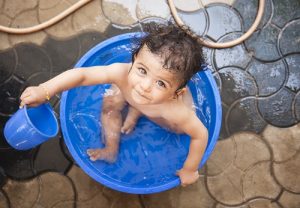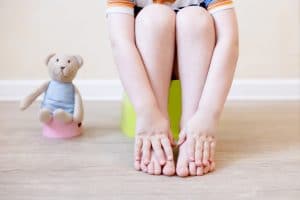Keep Watch is a safety message we all need to learn this summer to reduce the incidence of toddler drowning.
In this post, the Royal Life Saving Society of Western Australia promotes four simple ‘Keep Watch’ strategies to keep your toddler safe around water.

Children aged 1-2 years account for 65% of drowning deaths in the toddler age group. Toddlers are at risk of drowning because they are naturally curious and attracted to water, but also lack the coordination to stop themselves falling into water or to get out of trouble.
It only takes 3 centimetres of water and just a few seconds for a child to drown, so anywhere this amount of water is present is a potential hazard. Overall, 90% of toddler drowning deaths occur around the home, with swimming pools, baths and fishponds the most common locations. For children aged less than 12 months, the bath is the biggest danger.
The good news is that toddler drowning is completely preventable. Follow our 4 Keep Watch prevention strategies to keep your toddlers safe around the water this summer.
Supervise – Always keep watch of your child in and around water
- Supervision is the most important Keep Watch message. Adequate supervision means a responsible adult is within arm’s reach of children at all times. Supervision should be ‘eyes on’ and ‘hands on’- it is not the occasional glance while you nap, read or do chores, and it is not looking at children playing outside while you are inside the house.
It can often be tempting to leave older children supervising younger siblings around water. Children are easily distracted and may not notice something has gone wrong or recognise an emergency. Responsible adult supervision is always the best option.
- Do not leave your child – even only for a short time – always take them with you or remove them from the water and place them somewhere safe.
- Don’t forget that constant supervision is just as important around ponds, rivers, dams and lakes as it is around the pool and bath.
Prevent your child’s access to water at all times
- Creating a barrier between your child and a body of water is one of the most effective ways to prevent drowning. In many Australian states legislation requires all private pools to be fenced. Pool fencing and gates must be used correctly to ensure they provide protection. Never leave pool gates propped open, regularly check there are no holes or damage, and remove any items from around the fence that could be used by a child to climb over.
- There are lots of other water hazards around the home so think about ways to prevent access to these – empty paddle pools and buckets immediately after use, and store them upside down. Water features and fish ponds can be covered with a strong mesh to prevent children falling in. Inside the house, always keep bathroom, laundry and toilet doors closed, and empty out baths and buckets immediately after use.
Learn – Teach your child to be water confident
- Swimming is a big part of Australian culture and it is essential that children are familiar with the aquatic environment from a young age. Introducing water familiarisation skills can be an enjoyable bonding time for parent and child. Water familiarisation classes build confidence and introduce children to basic water safety and survival skills.
- Water familiarisation can also include setting rules and boundaries. Set rules for children near water and ensure you and other adults enforce the rules to set a good example. When you’re visiting new aquatic locations with your child ensure you discuss any new or different rules.
- Be aware that no water familiarisation class can ‘drown-proof’ a child. If children fall into water unexpectedly, they may panic and forget to apply their swimming skills. Always Keep Watch when children are in or around the water, regardless of their swimming ability.
- Visit our website to find your local RLSSWA endorsed swim school.
Respond – Learn CPR and call 000 in an emergency
- In many emergency situations involving children, a parent will be the first person on the scene and can provide lifesaving assistance until emergency help arrives.
- If your child is missing around the home, check water locations first. If they have found their way into water, every moment counts. Check water sources both inside and outside the house before looking anywhere else.
- Every parent should learn first aid and CPR. Like any skill, resuscitation skills can be forgotten if not practised regularly. Update your resuscitation skills by completing a refresher course every 12 months.
- In the case of a drowning, any CPR is better than no CPR. Even if you haven’t completed a course, try your best until further help arrives. Call 000 immediately and they can tell you how to do CPR if you are unsure.
- Royal Life Saving Society WA runs three hour Heart Beat Club resuscitation courses which are specifically designed for parents with young children. The course covers common child injuries such as choking, burns and scalds, and drowning, with a major focus on child and infant CPR.
- Contact Royal Life Saving Society WA for a list of upcoming courses and enrol online today.
Royal Life Saving Society WA (RLSSWA) is the leading not-for-profit water safety organisation in WA, aiming to prevent loss of life and promote safe participation in water related activities. The Keep Watch program is RLSSWA’s toddler drowning prevention program. It aims to reduce the incidence of toddler drowning by educating parents and carers of young children about drowning, dangers around the home and in the community, and prevention strategies.
To learn more about drowning prevention visit the Royal Life Saving Society WA website www.lifesavingwa.com.au, and the Keep Watch and Royal Life Saving Society WA Facebook pages.















